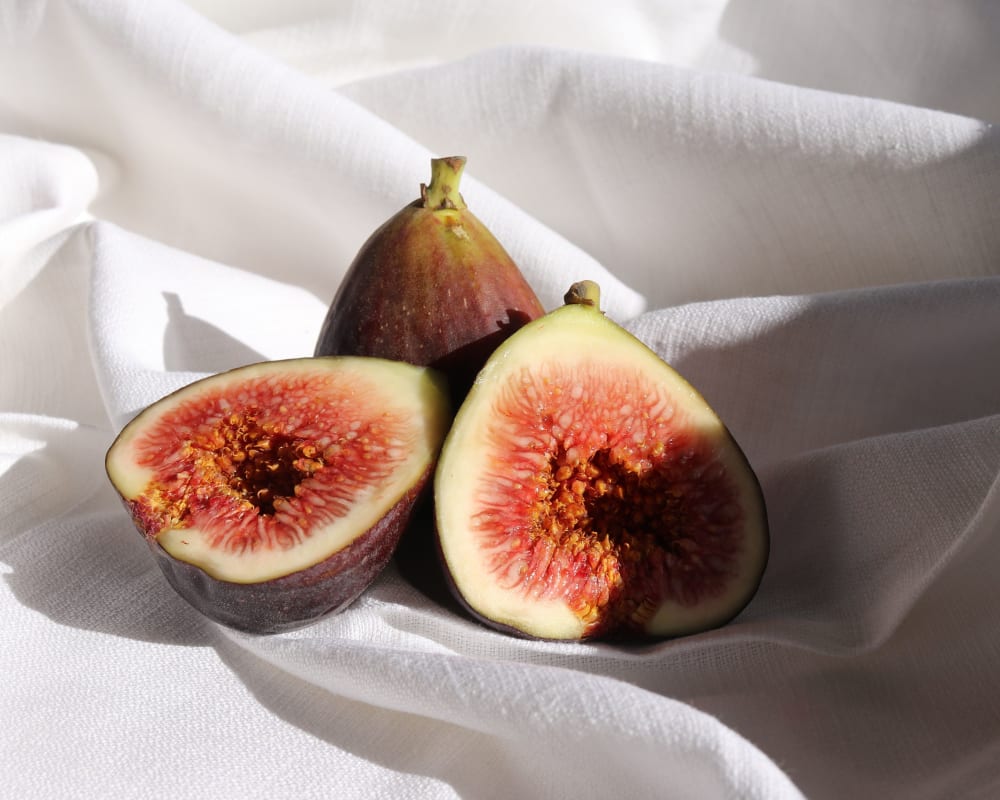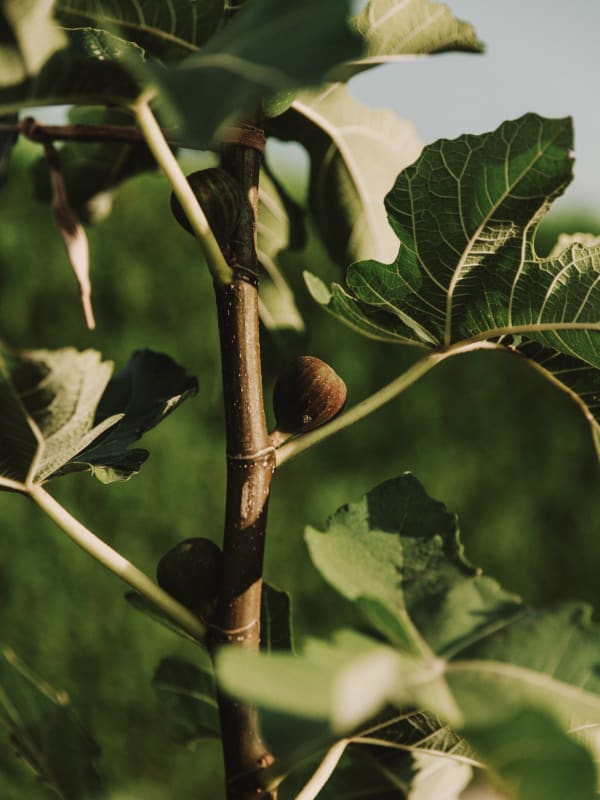Figs & Their Wasps

Figs & Their Wasps
Is there a dead bug in your fruit?
Figs are not fruits at all but rather inside-out flowers. They can't rely on wind or bees for pollination, so they take a different approach. They secrete a volatile aromatic compound that draws a hyper-specific species-matched wasp when the time is right. That is to say, each fig species has a dedicated wasp species.

Wasps are needed to pollinate female figs because of their inside-out shape, and wasps need figs to incubate their larvae. It's a symbiotic mutualism that took at least 65 million years to evolve. They make each other possible.
A fig wasp will travel over 100 miles in less than two days when it catches the unique scent of the fig. The wasp then climbs into the ostiole, a specialized wasp tunnel entrance. The price of muscling through this tight crawl space is losing both wings and antenna, but such is the cost of potentially closing in on their life's purpose.
A female wasp's success in creating a glorious new generation of fig wasps is still not guaranteed; if the fig is female, the type humans eat, the wasp cannot lay her eggs and proceeds to die alone. Fortunately for the fig, she will at least have delivered some pollen. Fortunately for humans, the fig produces an enzyme called ficin that completely dissolves the wasp's body.
If the fig turns out to be female, the lucky wasp gets to lay her eggs amidst the hundreds of enclosed flowers that await: a perfect nursery. When the eggs hatch, the male wasps among them are born blind and wingless. They will live their entire lives inside the fig, having no reason to leave. Their only functions are to fertilize the female wasps they were born next to and dig a tunnel for the female’s escape. The female hatchlings will emerge, covered in pollen, ready to find another fig and start the process all over again.
In these modern times, many of the commercial store-bought figs are bred to self-pollinate, meaning that a dissolved female wasp skeleton is no longer part of the deal.
But the fascinating dynamic between figs and wasps is very much alive and well in the natural world, and learning about it ought to enrich our appreciation for both.





